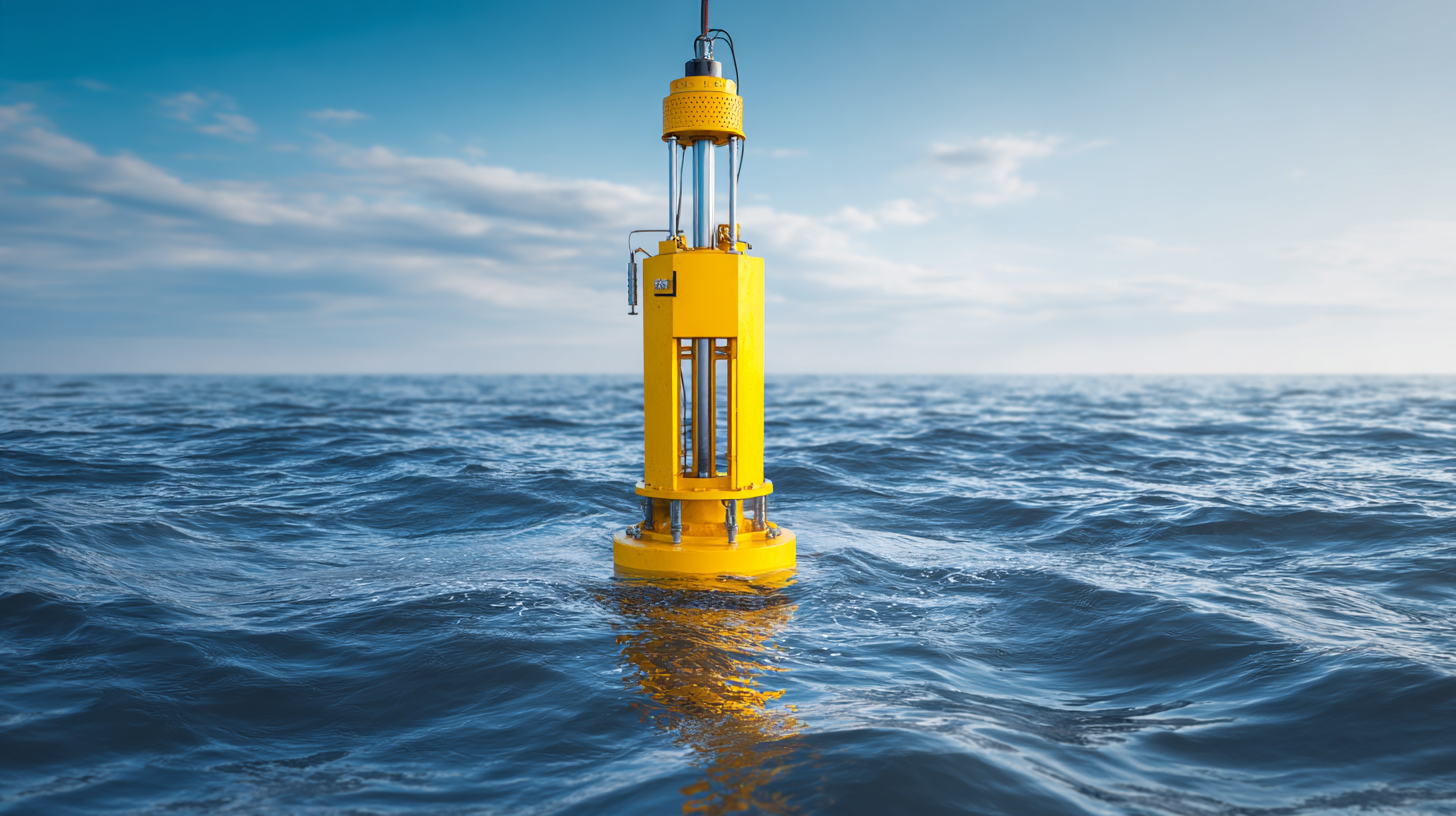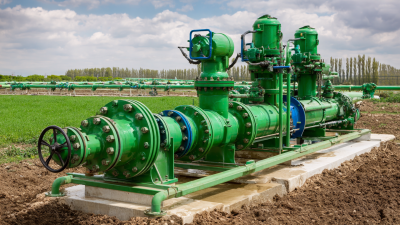 In the realm of effective water management, the selection of appropriate equipment plays a pivotal role in ensuring efficiency and reliability. Among various pumping solutions, the submersible pump stands out due to its ability to operate underwater, enabling it to handle the transportation of water and wastewater effectively. According to a report by MarketsandMarkets, the global submersible pump market is projected to reach $11.67 billion by 2025, reflecting an annual growth rate of 5.4% from 2020. This trend highlights the increasing reliance on submersible pumps across various sectors, including Agriculture, Municipal Water Supply, and Industrial Applications.
In the realm of effective water management, the selection of appropriate equipment plays a pivotal role in ensuring efficiency and reliability. Among various pumping solutions, the submersible pump stands out due to its ability to operate underwater, enabling it to handle the transportation of water and wastewater effectively. According to a report by MarketsandMarkets, the global submersible pump market is projected to reach $11.67 billion by 2025, reflecting an annual growth rate of 5.4% from 2020. This trend highlights the increasing reliance on submersible pumps across various sectors, including Agriculture, Municipal Water Supply, and Industrial Applications.
The operational advantages of submersible pumps stem from their design, which minimizes the risk of cavitation and enhances efficiency by reducing energy consumption. Studies indicate that submersible pumps can achieve energy savings of up to 30% compared to traditional pumps, making them a cost-effective choice for long-term water management solutions. Furthermore, their versatility allows for applications ranging from dewatering construction sites to managing groundwater levels and facilitating irrigation processes, which are critical in water-scarce regions. Understanding the significance of submersible pumps within the broader context of water management can lead to improved operational efficiencies and sustainable practices within various industries.
Submersible pumps play a pivotal role in enhancing water management efficiency across various applications. One of the key benefits of these pumps is their ability to operate underwater, allowing for the effective removal of water from deep wells, reservoirs, and even flooded areas. This feature not only maximizes water extraction but also minimizes the energy costs associated with pumping, ensuring that resources are utilized more efficiently. Furthermore, their design reduces the risk of cavitation and wear, leading to longer operational life and lower maintenance requirements.
Another significant advantage of submersible pumps is their versatility. They can be employed in diverse settings, from residential drainage systems to agricultural irrigation and industrial processes. This adaptability means that organizations can deploy a single type of pump across multiple applications, simplifying inventory management and lowering operational costs. Additionally, their sealed construction protects the motor from external elements, ensuring reliable performance in challenging environments. Overall, these benefits contribute to a more sustainable and effective water management strategy.
| Benefit | Description | Efficiency Improvement (%) | Application Areas |
|---|---|---|---|
| Space Saving | Submersible pumps are installed underwater, saving surface space. | 15% | Residential, Agricultural |
| Energy Efficiency | They consume less power due to closer proximity to the water source. | 25% | Irrigation, Mining |
| Reduced Noise | Operates quietly as they are submerged within the water. | Noisy operations reduced by 40% | Residential, Commercial |
| Durability | Built to withstand harsh conditions and submersion. | Lifespan increased by 30% | Industrial, Wastewater |
| Versatility | Can be used in various applications including drainage and fountains. | 20% increased adaptability | Irrigation, Firefighting |
When it comes to efficient water management, the choice of a submersible pump can make a significant difference. Submersible pumps are designed to operate underwater, making them ideal for applications such as draining flooded areas, dewatering construction sites, and irrigation systems. According to a report by the Water and Wastewater Equipment Manufacturers Association (WWEMA), the global submersible pump market is expected to grow at a CAGR of 5.2% from 2022 to 2027, driven by rising demands for efficient water management systems.

Key features of submersible pumps that contribute to their optimal performance include robust construction, high efficiency, and the ability to handle solids. Made from corrosion-resistant materials, these pumps are designed to withstand harsh environments while ensuring longevity. Furthermore, many submersible pumps utilize high-efficiency motors that can save up to 30% in energy costs compared to traditional pumps. The ability to efficiently manage solids, with some models capable of handling particles up to 3 inches in diameter, also enhances their versatility in various applications. With these features, submersible pumps provide a reliable solution for effective water management.
Submersible pumps are becoming increasingly vital across various industries due to their efficiency in water management. These pumps are designed to work underwater, making them ideal for applications that require the movement of liquids from deep wells or in flooded areas. In the agriculture sector, for instance, submersible pumps are extensively used for irrigation purposes, ensuring that crops receive adequate water supply even in challenging terrains. Their reliable operation under substantial pressure makes them suitable for handling varied fluid types, including clean and dirty water.
The global submersible pumps market has shown remarkable growth, with an estimated value of $11.2 billion in 2020 and a projected increase to $15.5 billion by 2025. This surge reflects the rising need for efficient water management solutions in urban development, mining operations, and wastewater treatment. Furthermore, the European water pump market is expected to expand at a compound annual growth rate (CAGR) of 3.4% from 2025 to 2030, underscoring the importance of submersible pumps in meeting regional water demands while supporting sustainability efforts across industries. As these pumps continue to evolve, their applications will likely broaden, further driving market growth.

When selecting a submersible pump, understanding the key factors can significantly enhance water management efficiency. First and foremost, consider the pump's material construction. Pumps must be corrosion-resistant to withstand harsh environments, especially when installed in water that may contain chemicals or abrasive sediments. Stainless steel and high-grade plastic are often preferred materials due to their durability and longevity.
Another crucial factor is the pump's power and flow rate. It's important to match the pump's capacity with the specific requirements of your project. An underpowered pump may struggle to move water efficiently, while an overpowered one could result in unnecessary energy expenditure. Ensuring the pump's specifications align with the system's demands will optimize performance and reduce operational costs.
Tips: Always check the manufacturer's specifications for energy efficiency ratings. Choosing a pump with a higher efficiency rating can lead to long-term savings on energy bills. Additionally, consider the ease of installation and maintenance — a pump that is simpler to install will save both time and labor costs. When in doubt, consulting with a water management professional can provide valuable insights tailored to your specific needs.
Regular maintenance is crucial for enhancing the longevity and performance of submersible pumps. One of the key practices is to perform routine inspections. Checking for signs of wear, corrosion, or unusual noises can help identify potential issues before they escalate into costly repairs. Make sure to inspect the electrical components, seals, and impellers, as these parts are critical to the pump's operation.
Another important tip is to ensure proper lubrication of the pump's moving parts. Using the manufacturer's recommended lubricants can significantly decrease friction and wear, thereby extending the pump's lifespan. Additionally, keeping the pump free of debris and sediment is essential, as accumulation can hinder performance and lead to overheating. Regularly cleaning the intake screen and checking the surrounding environment will prevent blockages and ensure optimal water flow.
Lastly, monitoring the pump's performance metrics, such as flow rate and voltage, can provide valuable insights into its health. If you notice any deviations from normal operating conditions, address them immediately to avoid further damage. Implementing these maintenance tips will not only enhance the efficiency of your submersible pump but also provide a reliable solution for your water management needs.






Please enter the details to download, thank you
Get in Touch With Us
Please enter the details to download, thank you
Please enter the details to download, thank you
Please enter the details to download, thank you
Please enter the details to download, thank you
Please enter the details to download, thank you
Please enter the details to download, thank you
Please enter the details to download, thank you
Please enter the details to download, thank you
Please enter the details to download, thank you
Please enter the details to download, thank you
Please enter the details to download, thank you
Please enter the details to download, thank you
Please enter the details to download, thank you
Please enter the details to download, thank you
Please enter the details to download, thank you
Please enter the details to download, thank you
Please enter the details to download, thank you
Please enter the details to download, thank you
Please enter the details to download, thank you
Please enter the details to download, thank you
Please enter the details to download, thank you
Please enter the details to download, thank you
Please enter the details to download, thank you
Please enter the details to download, thank you
Please enter the details to download, thank you
Please enter the details to download, thank you
Please enter the details to download, thank you
Please enter the details to download, thank you
Please enter the details to download, thank you
Please enter the details to download, thank you
Please enter the details to download, thank you
Please enter the details to download, thank you
Please enter the details to download, thank you
Please enter the details to download, thank you
Please enter the details to download, thank you
Please enter the details to download, thank you
Please enter the details to download, thank you
Please enter the details to download, thank you
Please enter the details to download, thank you
Please enter the details to download, thank you
Please enter the details to download, thank you
Please enter the details to download, thank you
Please enter the details to download, thank you
Please enter the details to download, thank you
Please enter the details to download, thank you
Please enter the details to download, thank you